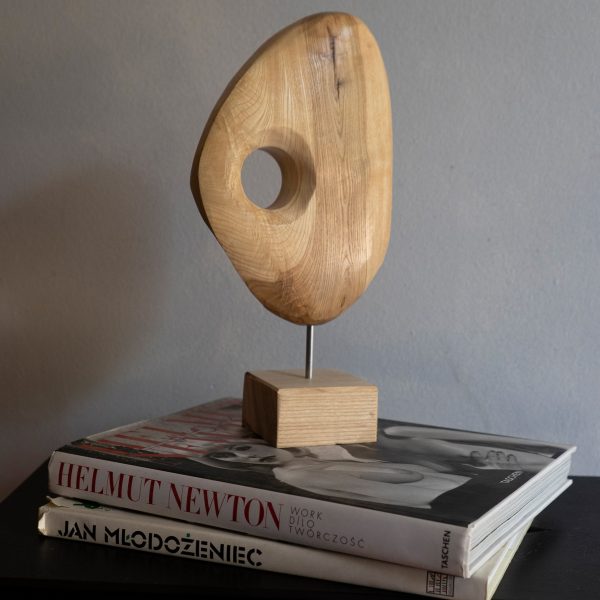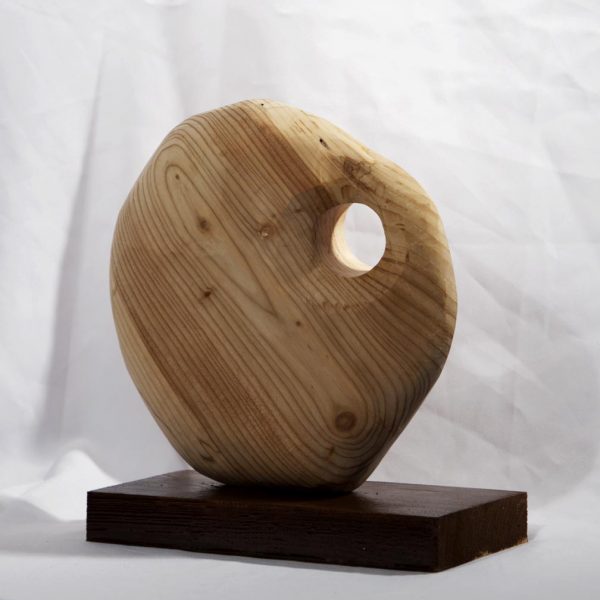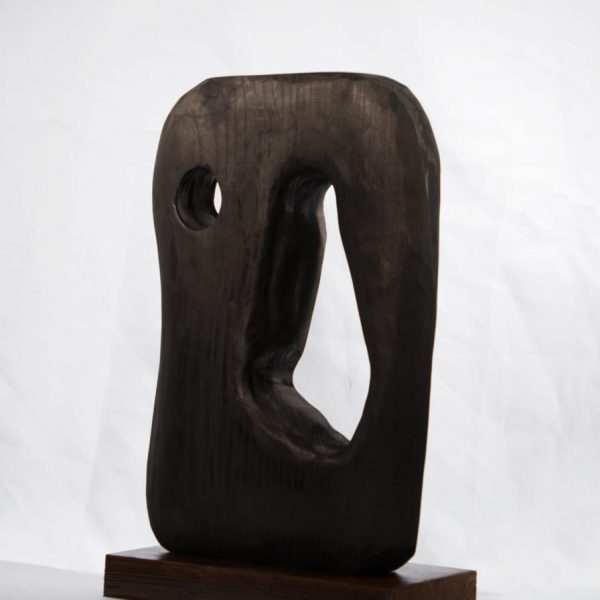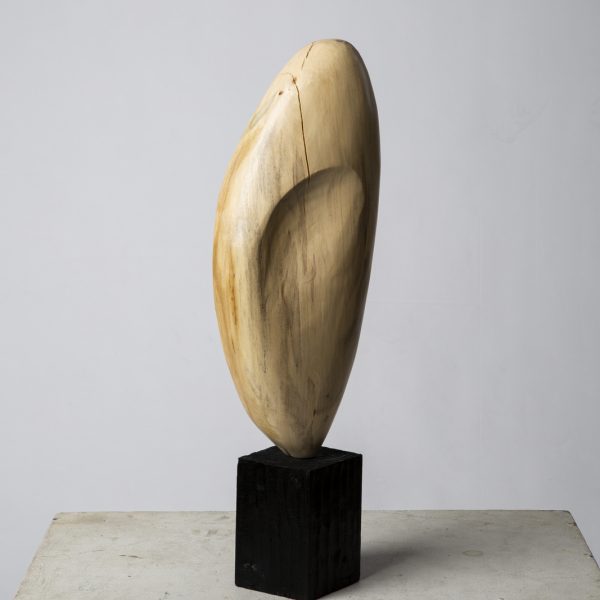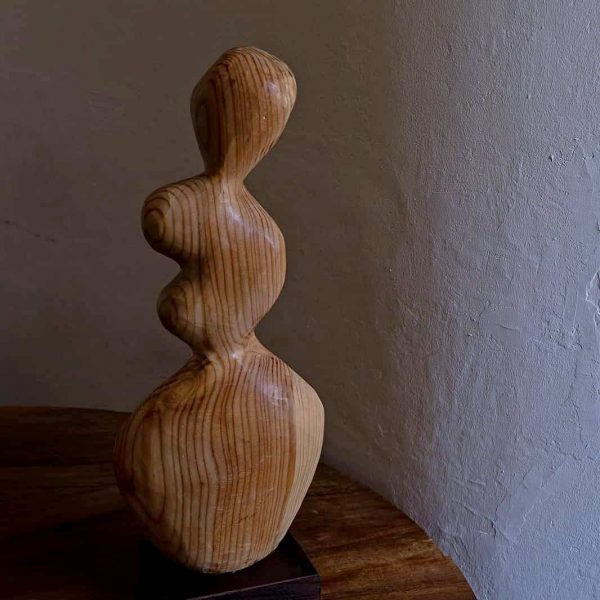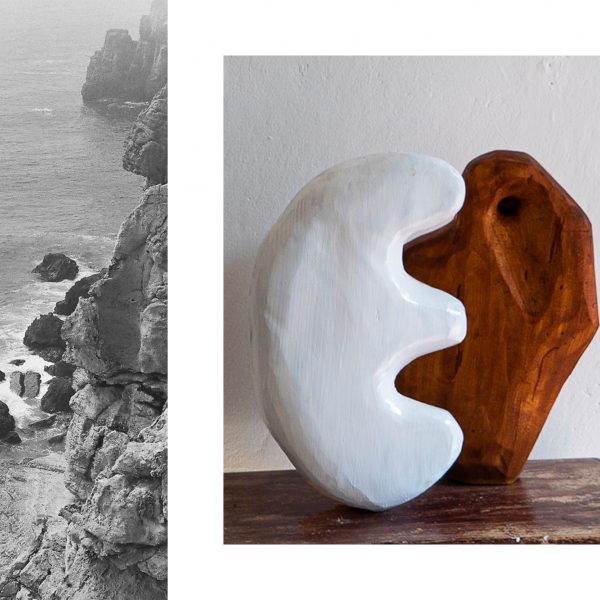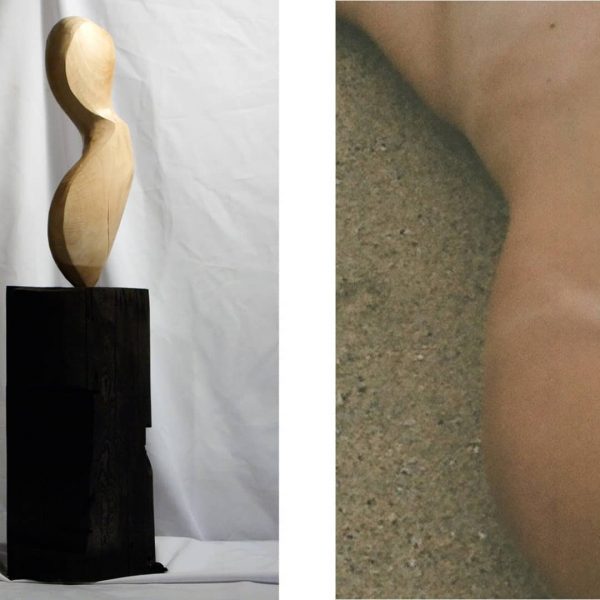
wood and quicksand
Anna Michałowska: Since we’re both from Zakopane, I have to ask: how big of an impact has this town had on you as an artist? After all, it is in many ways a special place, where many famous artists either lived or studied leaving their mark in the town’s fabric; a place where a blow of halny, the local foehn wind, can turn everything upside down; and also a place, whose peculiar climate was once compared by Witkacy to a highly addictive drug.
Magdalena Berbeka: Being from Zakopane has influenced me not only as an artist, but also as a human being. It is indeed a special feeling to come from a place to which tourists flock every year. I like thinking of Zakopane as a town similar to Davos from T. Mann’s Magic Mountain. Time has a different pace there, there’s an aura of peculiarity and mystery in the air. The same places, that many consider tourist attractions, were simply my favorite spots where I would play as a child.
AM: Still talking about Zakopane, you attended A. Kenar high school, where artists such as Kenar himself, Antoni Rząsa, Władysław Hasior, Tadeusz Brzozowski or Grzegorz Pecuch either studied here or taught. I am curious as to what extent that awareness influenced you and whether you draw inspiration from their work.
MB: It is my impression that, even if I didn’t want to, I’d always be marked by their work anyway. You can easily see that in my art, as for my bachelor’s degree project I ended up making concrete casts inspired by Hasior’s. I’ve also designed a bowl, the prototype of which is the bowl made by my husband’s grandmother, whose teacher was Kenar himself. I guess this is my way of receiving lessons directly from him. The work of Zakopane artists is constantly evolving and I’m sure this is something that will always be there, influencing my work to one degree or another.
AM: What about world-famous painters and sculptors? Looking at your drawings, one can see references to, Joan Miró, among many others. Is there any other artist, whom you hold particularly dear?
MB: Yes, my fascination with Miró began after reading his book I Work Like a Gardener. One day something struck me and I channeled my art towards a new direction, different from what I had been doing until that moment. Soon I turned my back on the academia and stopped following my teachers’ advice. At first it was just about me making my own sketches, but then they grew into sculptures. So that was one factor that made my art what it is today.
As for other artists, I’m greatly inspired by Barbara Hepworth and mesmerized by Isamu Noguchi. I love Picasso, of course, because that’s one artist you cannot not like (laughs). That said, it’s a constant discovery for me, even with the artists that I’m already familiar with. Recently I came across Le Corbusier, whose painting made me want to draw a small home mural, I’m feeling very drawn to that idea at the moment.
AM: You mentioned your husband’s grandmother who sculpted and was taught by Kenar. Are there any artists in your family?
MB: There was certainly never a sculptor in my family, but you could say we were no strangers to art as such. Ever since I was a child, I remember books and literature as the two most important things in the house. From the very beginning, my parents were very supportive of my inclination for art. And they continue to support me to this day. And you can sometimes see this in the simple gestures: say, if I need to change the chain in a saw, my dad goes and buys it for me. And sometimes when my parents come back from work, they lift up the trunk and show me what they got me on their way back, a huge log of wood for example (laughs). And that is so cool. My sister, who’s a film school student majoring in editing, is another artsy one in the family, so I guess we both got our love for art from home.
AM: Interestingly, your saw-and-chain story is a good starting point for my next question. When we think of sculpting, we often imagine a small piece of wood, a chisel, sandpaper, while in fact wood carving is tough physical work, plus working with heavy machinery can be dangerous. What made you choose wood over clay, which is easier to work with?
MB: Wood is a material that I actually revisited after many years, because in high school we would work primarily with wood. And when I got into the art school, I completely abandoned that, likely because I was fed up with it at that point. But then the pandemic happened and I spent a lot of time in Zakopane, and I feel that the return to my family town coincided with my re-discovery of wood. I found that I could simply start over in my backyard garden, as if I had come home after many years. I enjoyed the smell of wood while sanding, and I understood that it had to be it. It seems to me that the combination of the craft that I learnt in high school with the full freedom coming from personal rather than academic creation found a great outlet in wood.
AM: Here we are again: speaking about Zakopane and how much it still influences your creativity.
MB: Yes, I think this place haunts me a bit. Overall, my relationship with Zakopane is rather complicated. When you get there, it’s easy to get buried in quicksand, so to speak. But at the same time, when I’m away for too long, I miss it so much, that I simply have to come back. Turns out that I can’t quite live without it (laughs).
AM: Zakopane and its landscape lead me to my next question. In social media you combine your sculptures of soft, biomorphic shapes with pictures of nature – the sea and steep fjords. Would you say nature has an important role in your life?
MB: I think growing up in the mountains played an important role in all that. There’s something fascinating about them – a sort of strange power and movement in their immobility and persistence. I had a similar revelation with seaside cliffs. There doesn’t seem to be any movement there and yet they’ve been constantly shaped for millions of years – that realization was a truly mystical experience for me and an inspiring one, too.
AM: Where else do you seek inspiration – is it snowboarding, travels, old movies? Is it a form of escapism from everyday life and work, or rather an opportunity to find ideas for a new sculpture?
MB: I perceive creation as a very complex, ongoing process consisting of many stages. And so, the outcome, which is the sculpture, is the product of everything that I experience. Ideas sometimes occur to me in very unexpected, mundane moments of my life. I can easily get inspired by the shape of snowflakes or a piece of music. It seems to me that it is very important what you feed your mind with, as it then becomes the raw material from which the shapes in my mind emerge.
AM: So far we have talked about sculpture, and even though that’s what you’ve been busiest with lately, you also create collages, draw nudes and abstractions. Which of these, if any, do you hold dearest?
MB: I think no artist likes to limit themselves. You have to try your hand at everything, because it is part of the creative process – you quietly process it inside and one day it gives rise to new qualities. Today I like to think of myself as a sculptor, because it is in this physical aspect of creation, which is characteristic only of sculpture, that I fell in love with.
The very fact that I can go out and get tired, sweat and get dirty, and then take a shower and wash it all off makes it very tangible and physical. What interests me in sculpture is that part which is not available in other art forms. By that I mean a certain feeling of space. Sculpture and graphics, for example, work on two entirely different levels, where sculpture is something that can be touched and that itself is already very inspiring.
AM: We may as well have kicked off with this next question, but I think it will work equally well as a closure for our interview: what is art for you?
MB: This is a very important, if not the most important, question an artist can ask themselves. For me, art is a bit like a field of science. The same way science explains the world to the mind, appeals to reason, art explains it to the heart through emotions. Just yesterday I was at the movies to see Wes Anderson’s The French Dispatch and I think this film is a good example of art being something that lets you see the black-and-white world in color, that lets you see both the past and the future.
Art is love, poetry, new tastes, everything that stirs you up on the inside, changes you and lets you experience the thrill of emotions. I think this is what art is to me.
transl. Jakub Majchrzak


